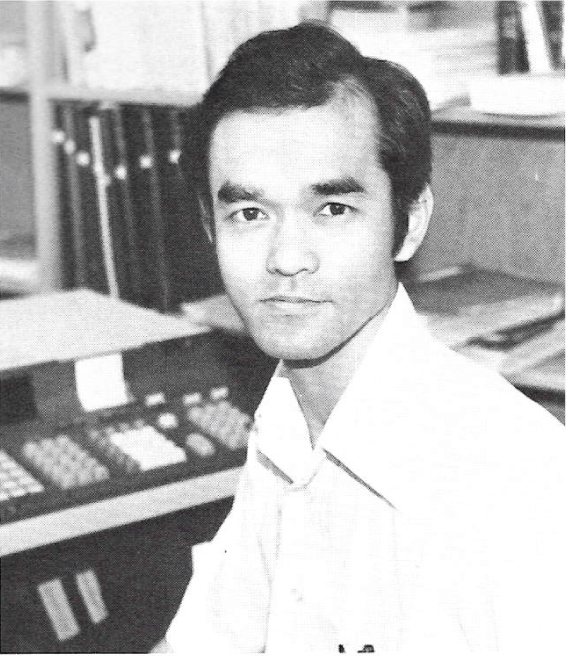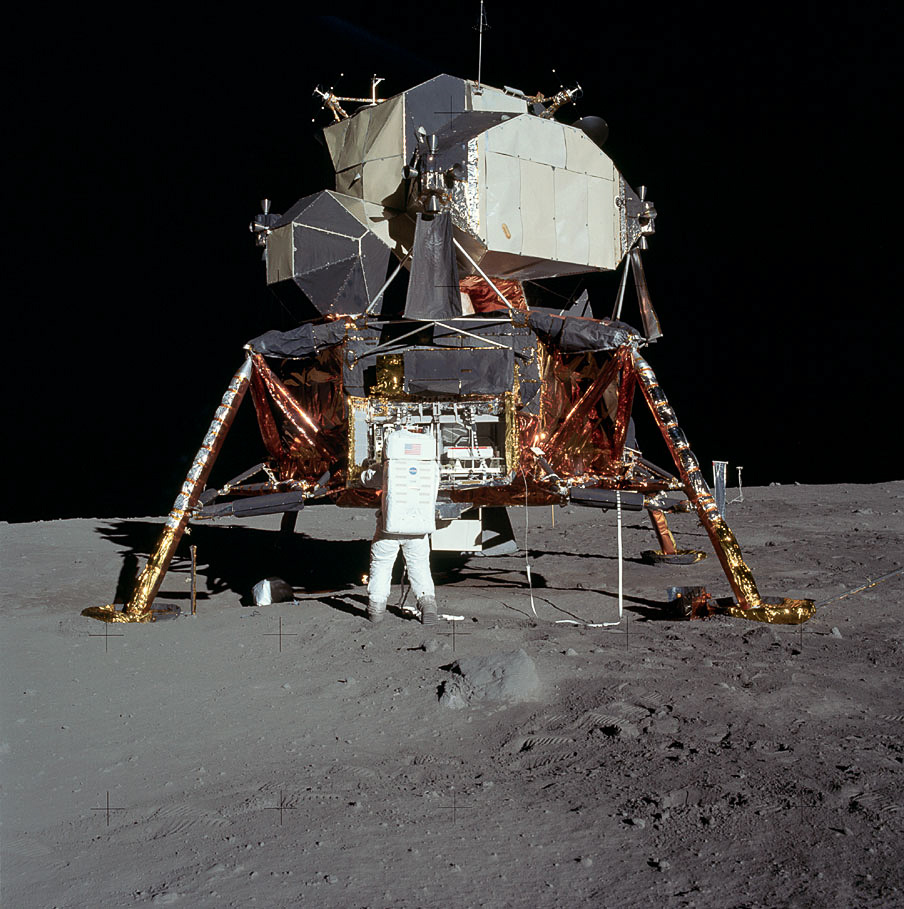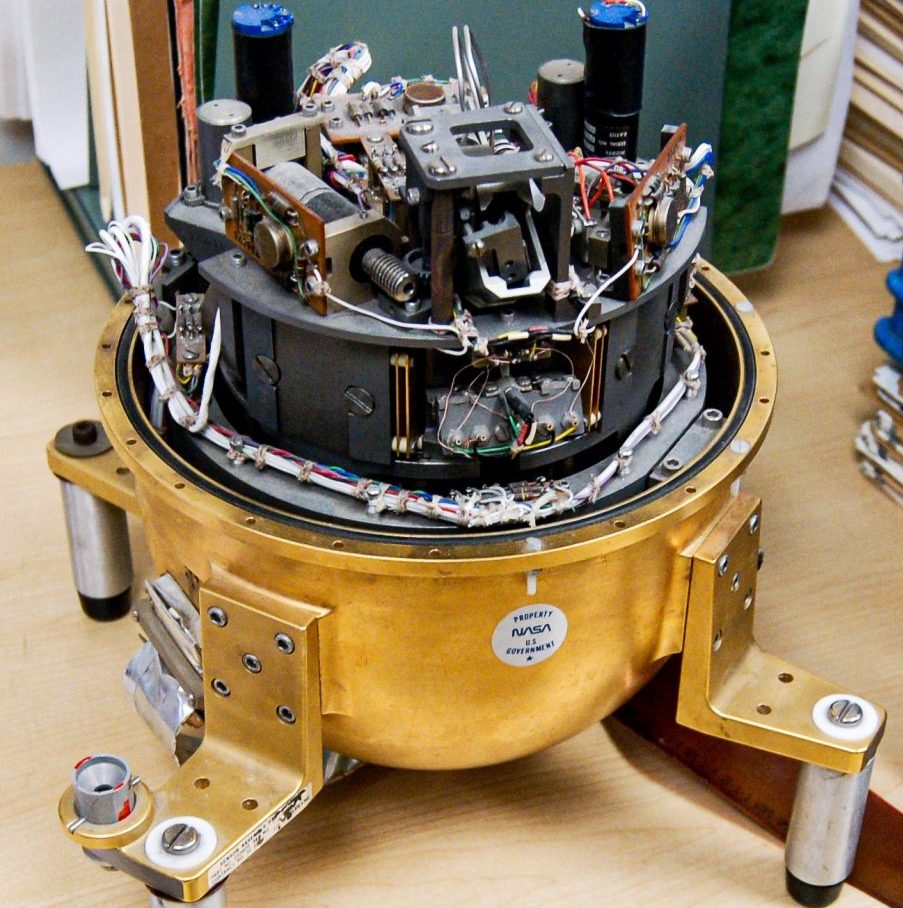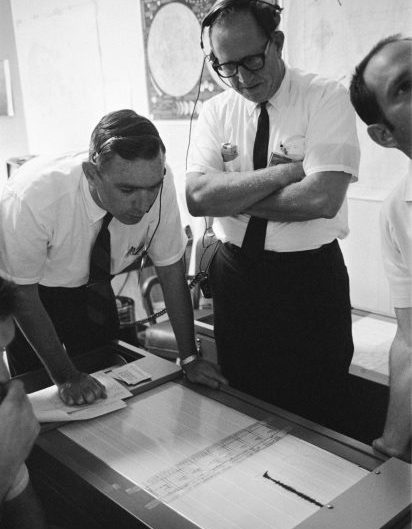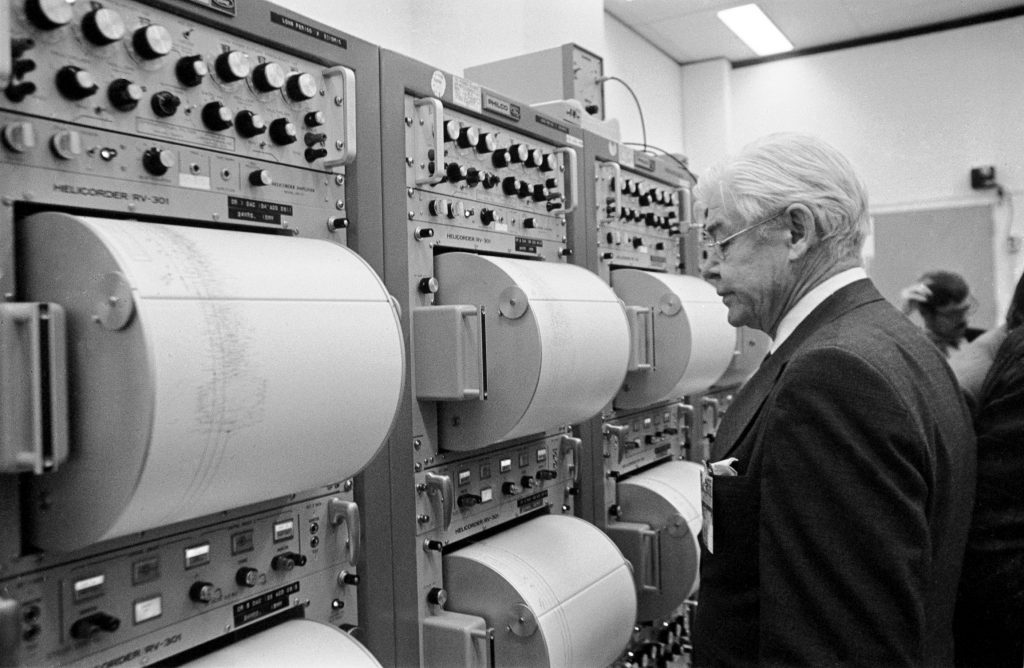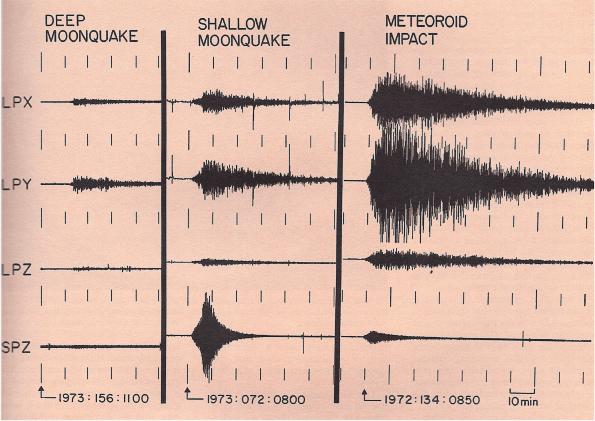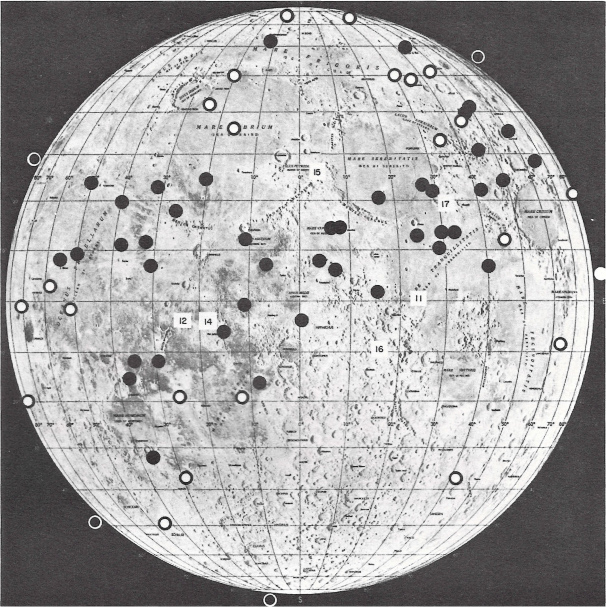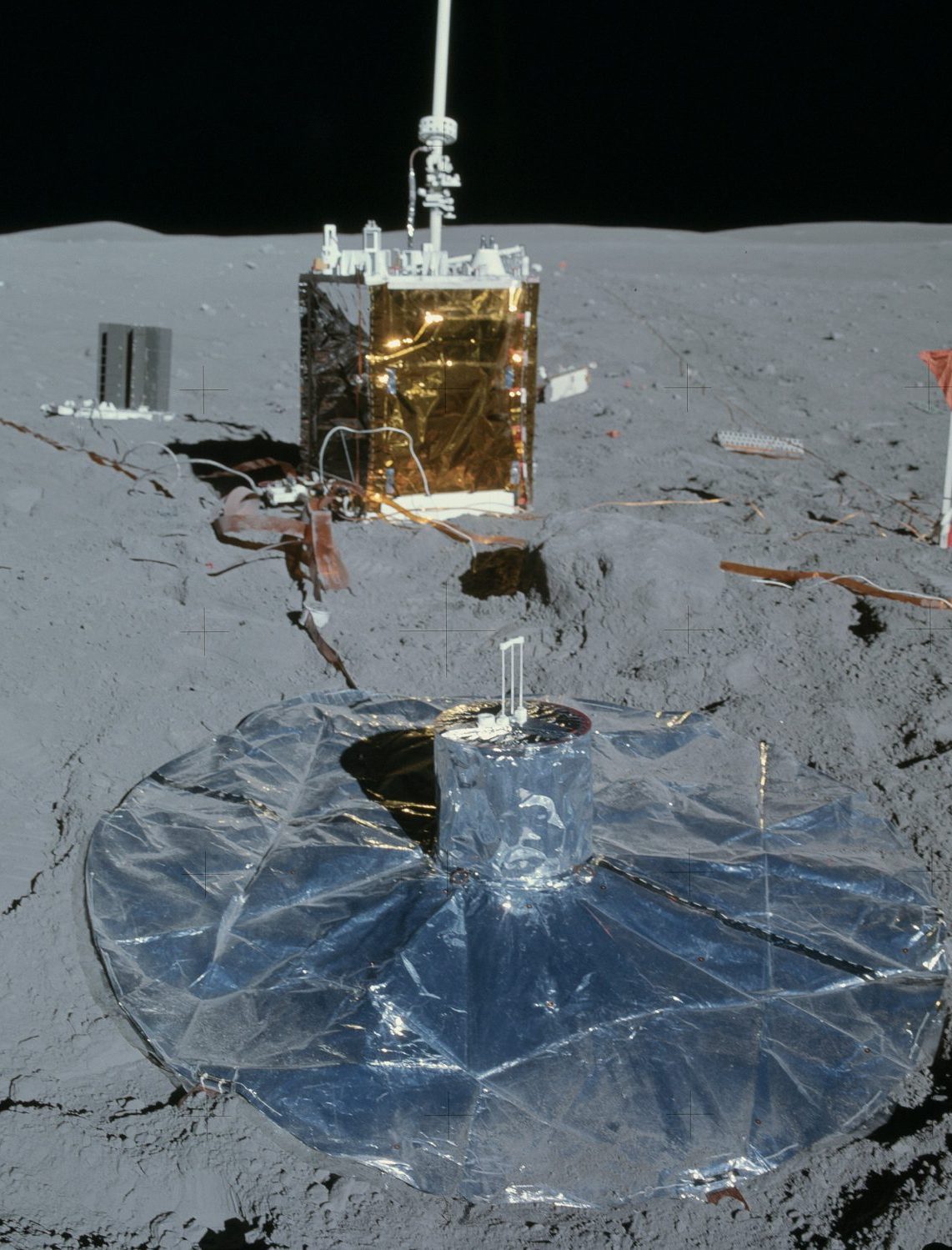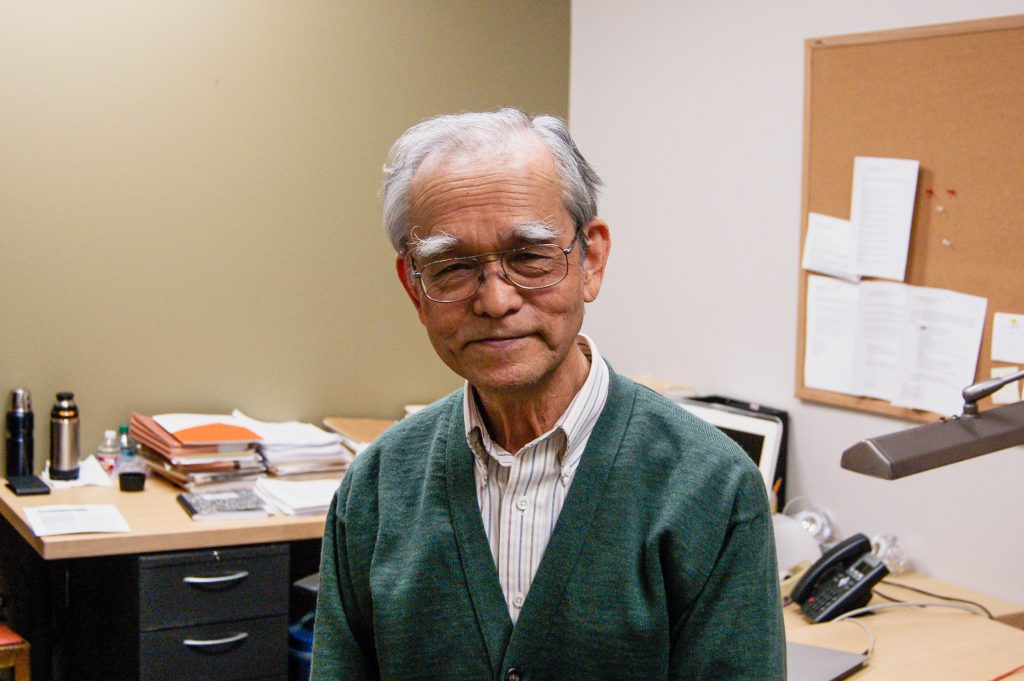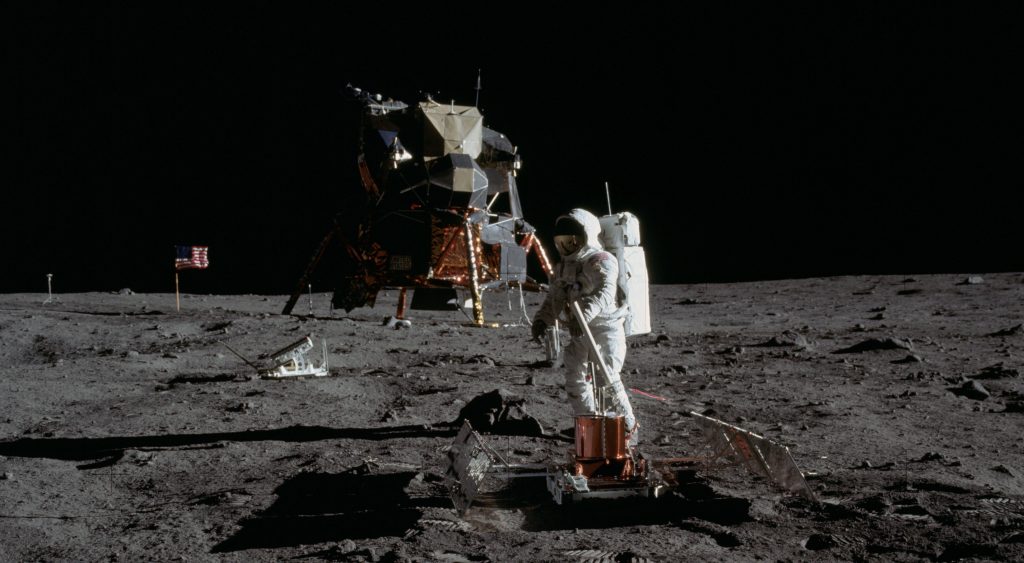
By Constantino Panagopulos
Fifty years ago, when Neil Armstrong and Buzz Aldrin became the first humans to walk the surface of the moon they left behind a seismometer – a bulky instrument about the size of a milkcrate whose purpose was to detect moonquakes. Yosio Nakamura was one of the scientists involved in preparing the experiment and was involved in analyzing the instrument’s data as it was transmitted from the moon. Today, Nakamura is Professor Emeritus at the University of Texas Institute for Geophysics (UTIG), where he has worked since it was founded in Galveston* in 1972 by renowned Earth scientist, Maurice Ewing. In the years since, Nakamura has succeeded in preserving much of the scientific data collected by the Apollo moon program and in doing so, allowed generations of scientists to continue to make new discoveries from data recorded nearly five decades ago. As well as pioneering lunar seismology, Nakamura has contributed significantly to marine geophysics and our understanding of subduction zones and was involved in NASA’s Mars Viking mission. Nakamura continues to help others search for new discoveries, guiding them to use modern analytical tools on the extensive lunar and Martian data recorded many years ago.
* * *
To most of us, the moon is a cold and lifeless place. To Yosio Nakamura, however, the moon is a world characterized by tides, moonquakes and mysterious seismic activity. It is a world of continuous change and constant surprise whose interior hides many unexpected discoveries.
Nakamura has been at the center of lunar seismology since the early days of the Apollo program when he was a young postdoc working with renowned Earth scientist Maurice Ewing at the Lamont-Doherty Geological Observatory of Colombia University.**
Before this, Nakamura was a research scientist working with jet fighter planes at defense contractor, General Dynamics. In these early engineering projects, Nakamura used acoustic sensors – which he describes as tiny seismometers – to listen for cracks and failures in aircraft parts.
“If you listen like this on any aircraft you will hear lots of little cracks all the time,” said Nakamura, “Putting small sensors on aircraft parts helps you detect the dangerous cracks much earlier than other non-destructive testing. And the way they occur, turns out to be very, very similar to how deep moonquakes occur.”
DESIGNING A SEISMIC EXPERIMENT FOR THE MOON
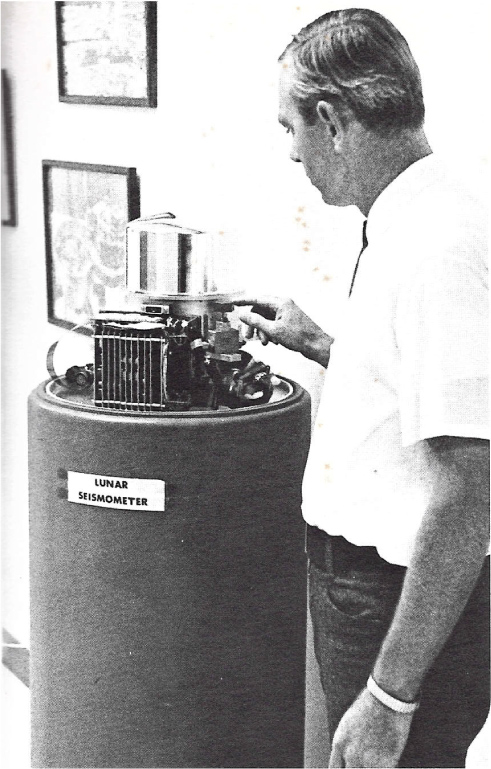
This was the height of the cold war and research opportunities at engineering companies like General Dynamics focused overwhelmingly on solving immediate engineering problems in as short a time as possible. Nakamura preferred a richer research experience so, in 1967, he requested a leave of absence from General Dynamics to try something entirely different: a geophysics postdoc.
“During that year,” he said, “I worked with Gary Latham, Jim Dorman, George Sutton and Maurice Ewing (all now legends of planetary and geoscience). This was how I got involved in the lunar seismic experiments.”
Ewing and Sutton had already worked together on a seismometer for NASA’s Surveyor program. Although that instrument never flew, when NASA finally agreed to include one on Apollo 11, Ewing was ready to assemble a team – which included Nakamura – and placed one of his own students, Gary Latham, in charge of the project.
The idea, said Nakamura, was to listen for impacting meteors.
“Maurice Ewing had a very good idea that if he puts seismometers on the moon, he can tell something about its interior,” recalled Nakamura. “At that time just about everyone thought the moon was dead, nothing was happening inside. But at least meteors are hitting the surface so you can maybe tell the internal structure of the moon from that signal.”
Nakamura’s role was to figure out what to do with the seismic data once they had it. Although his postdoc finished while the mission’s Saturn V rocket was still being assembled, his work on the project had been so important that when the Eagle lunar module touched down on July 20, 1969, Nakamura was with the team in Houston at the Johnson Space Center (then known as the Manned Spacecraft Center) waiting for the first seismic data from another world.
“It was such an exciting time,” he remembers. “we spent forty days at the Johnson Space Center working on the data as it came in. We did that for every (Apollo) mission. We studied the data and then after forty days we finished an initial report.”
The team included the Lamont group, two prominent geophysicists from MIT – Frank Press and Nafi Toksöz – and Sutton who had since taken a role at the University of Hawaii. Together the scientists pored over data week after week as it was transmitted to Earth. Then abruptly, the transmissions stopped.
“Apollo 11 was not protected from the direct heat of the sun,” says Nakamura. On the second lunar day, long after the astronauts had departed, as noon approached the inevitable happened.
Nonetheless, the team had recorded enough data to publish their report, giving scientists the first ever look into the interior of another world.
Just three months later, the team were back in Houston studying data streaming in from sensors placed on the moon by Apollo 12.

“There was no thermal shield at all, so the temperature got too high and killed the instrument.”
MOON BELLS AND LUNAR QUAKES: MESSAGES FROM THE MOON’S INTERIOR
When asked what we’ve learned about the moon from the Apollo program, Nakamura’s face lights up. “Lots!” he exclaims. “Mostly big surprises! We heard all kinds of signals, not only meteor impacts.”
As it turned out, the Apollo 11 experiment was too limited to offer more than tantalizing glimpses of what might lie beneath the moon’s surface. Although sensitive enough to detect the astronauts shifting in their sleep, the single seismometer meant it was difficult to differentiate between possible ‘moonquakes’ and artificial signals – in fact most signals were likely to have come from the lunar lander itself, what scientists called ‘LEM burps’.
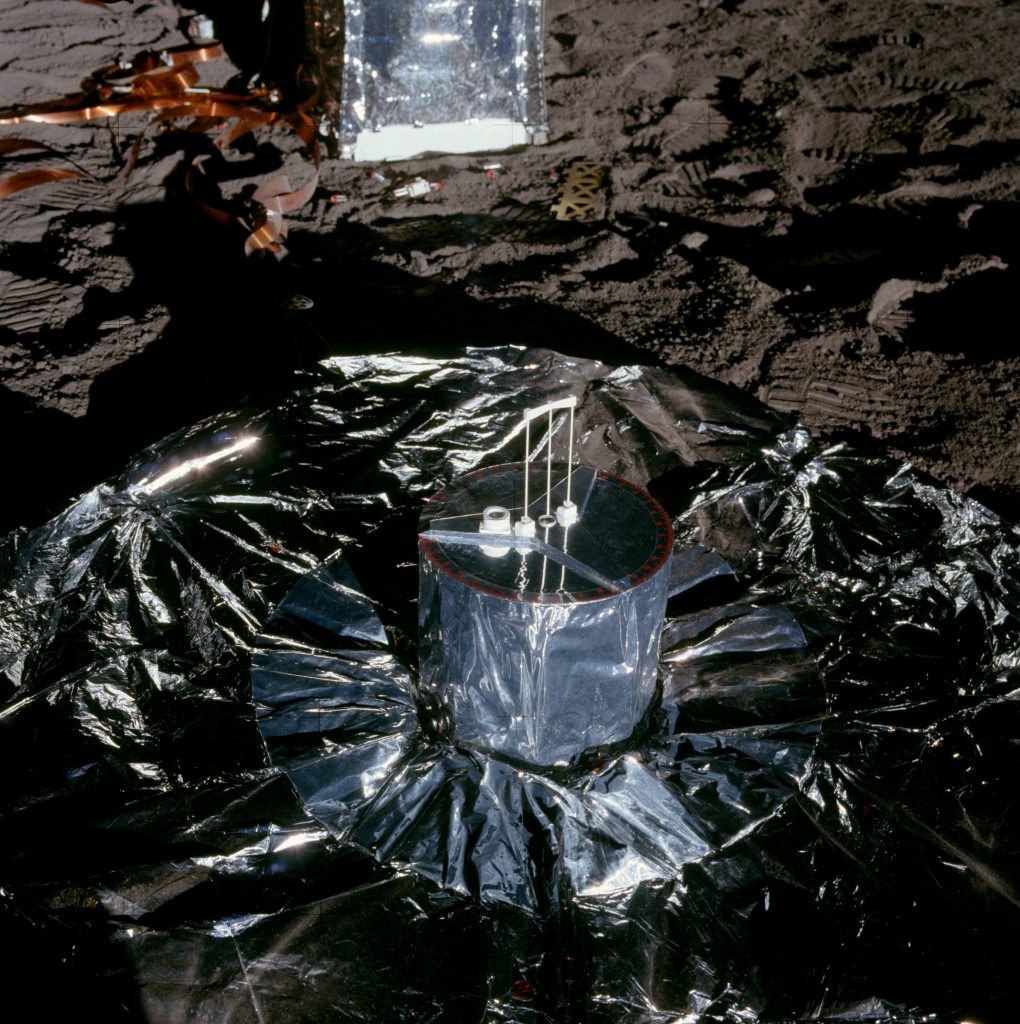
The really exciting discoveries began later that year when the returning Apollo 12 astronauts placed a (now heat shielded) seismometer on the moon and later purposefully crashed the lunar ascent module to see what would happen. The impact created a seismic signal that was unlike anything anyone had seen before.
“It was very peculiar,” remembered Nakamura, “nothing like any signal produced here on Earth. We didn’t know about it before, but the moon has almost no water. It’s very dry, and because of that, seismic signals do not attenuate very much.”
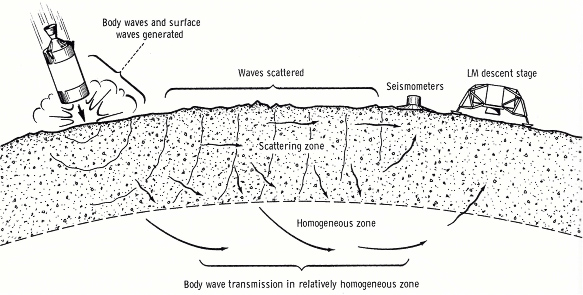
On Earth, seismic waves generated by say, an erupting volcano, quickly attenuate, in other words they are quickly absorbed into the damp crust and mantle, disappearing entirely before traveling a long distance. The moon’s interior, however, is dry and cracked from eons of meteor bombardment. This means that an impact on one side creates seismic waves that bounce and echo through the interior much longer than they do on Earth. Maurice Ewing, famously compared this to the ringing of a bell. “It is as though one had struck a bell, say, in the belfry of a church,” Ewing explained at the announcement of their discovery, “and found that the reverberation from it continued for thirty minutes.” In fact, the signal continued for over an hour.***
Surface impacts and lunar reverb were only the beginning.
“The big surprise actually came after that,” said Nakamura. “After Apollo 12 we started noticing very similar signals occurring a few times a month, every month. And we thought ‘what are these’?”
Artificial causes were ruled out after Apollo 14 landed in early 1971.
“They had to be some natural event at a far distance because they were observed by not one station, but two,” said Nakamura. “If we’d seen it only at one station maybe it could be coming from the lander itself, a leaking fuel tank or something. But if you have two stations far away, about 181 kilometers (112 miles) apart, you can tell from the time difference that it’s coming from somewhere else.”
The addition of a third station with Apollo 15 led to an even greater surprise. The regular signals they’d been recording were not coming from the surface. “They were coming from very deep underground!”
What the team saw were signs of activity happening deep beneath the moon’s surface.
Nakamura recalls the significance of this revelation: “these were deep events occurring just about half way to the center of the moon, at around 1,000 km (600 miles) deep.”
These deep moonquakes are believed to be generated by tidal forces stretching the moon as it travels around the Earth and rotates on its axis.
“We also found some much larger events occurring close to the surface, but again far away from the seismic stations,” added Nakamura. “We called these High Frequency Teleseismic events, now called shallow moonquakes.”
Nakamura said that even today little is known about shallow moonquakes and why they happen. Although only very few such quakes were detected, Nakamura and another UTIG colleague Cliff Frohlich think that they may be triggered by something outside our solar system.
“They seemed to occur at certain times when the moon was facing a certain direction, not relative to the sun, but the stars,” he said. “This is only our guess, but maybe shallow moonquakes are caused by particles hitting the moon from some far away star.”
THE IMPORTANCE OF SAVING YOUR DATA
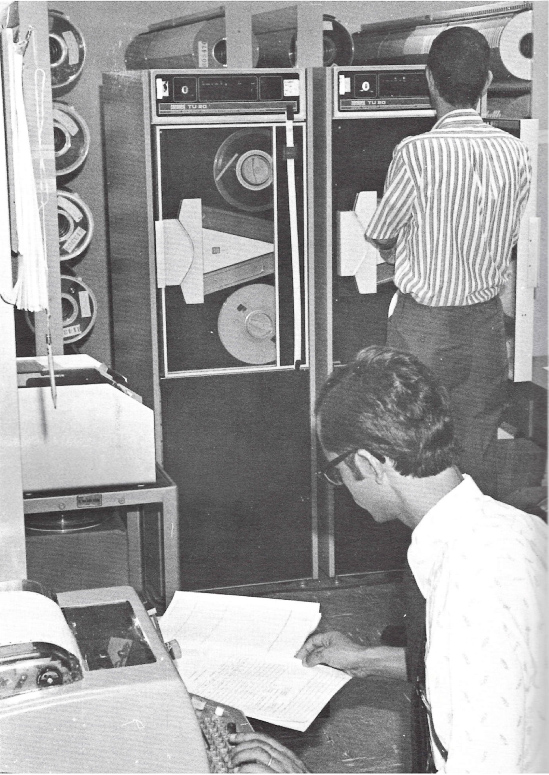
Although finding what triggers these moonquakes may not be possible without returning to the moon, startling discoveries continue to be made by scientists still working on data gathered during the Apollo years. That wouldn’t be possible were it not for the efforts of Nakamura and others at The University of Texas at Austin and beyond to store and archive the Apollo data.
Long before the age of the cloud and cheap online data storage, scientific data from the Apollo program was recorded on large, open-reel magnetic tapes. The moon-based sensors recorded information digitally (and were some of the first to do so) but had very little storage capacity so everything was transmitted live to receiving stations on Earth where the data was recorded on large tapes called ‘range tapes’. These were decoded and transferred to smaller seven-track digital tape reels and distributed to the relevant scientific groups. At their best, these seven-track tapes could store about 800 bits per inch – to give that some context, you would need an entire reel to store a single photo taken by your phone.
NASA dealt with the problem of how to store the tens of thousands of data reels generated by the lunar experiments in different ways. From Apollo 11 until March 1974, NASA separated data for individual experiments and sent them to the respective Principal Investigators (PI’s). Later, from April 1974 to February 1976, instead of separating data for individual experiments, the whole lot was recorded onto seven-track tapes known as ARCSAV tapes and scientists were asked to extract whatever data they needed. Then, NASA decided to take itself out of the loop.
“Back in 1976,” remembered Nakamura, “NASA said they don’t have any more money to process the data, so they asked us to take over.”
From March 1976 until the program was terminated in September 1977, the range tapes recorded at the receiving stations were sent directly to Galveston, where UTIG staff processed and recorded the data to nine-track tapes.
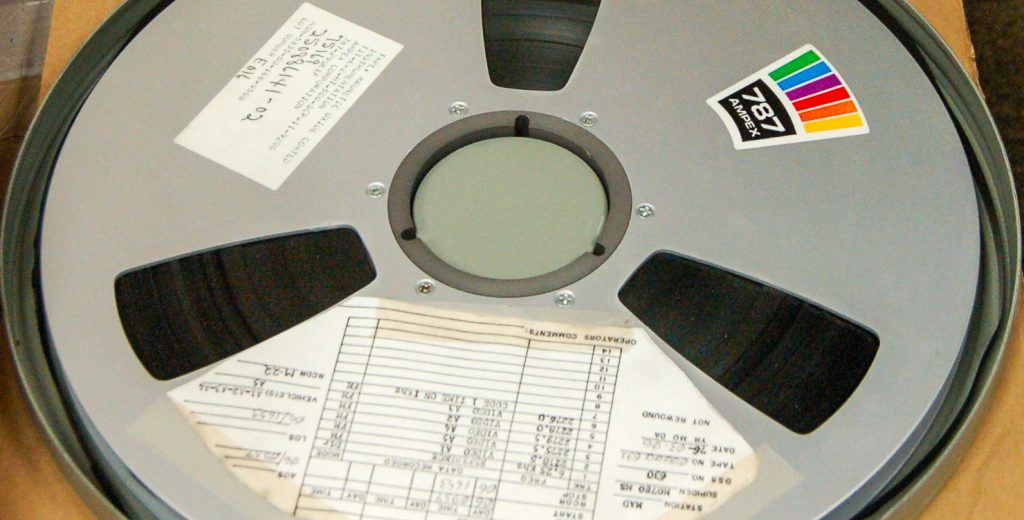
Although nine-track tapes could hold more data (around 1,600 bits per inch), after just nineteen months, the institute had recorded nearly 1,500 reels of scientific data, adding to the nearly 10,000 reels of Apollo seismic data they’d already received in the preceding years.
And that was it.
In September 1977, NASA decided it needed to redirect resources to the Skylab space station and all the moon-based science instruments were shut down. The Apollo program, and the last significant US-led mission to the moon, came to an end.
What of the data? In addition to UTIG’s copies of lunar seismic data recorded since Apollo 11, the data recorded after March 1976 included information from the other science instruments on the moon. These measured things like lunar dust, solar wind, the moon’s magnetic fields, variations in the moon’s gravity, cosmic rays and heat flow. Unfortunately, recordings from these instruments before March 1976 were not so fortunate.
“Before (March 1976) NASA wanted us to read the data, extract what we want and send it back to NASA for archiving,” said Nakamura. “Then somebody in a committee said there’s no use keeping those.”
Magnetic tape reels were expensive and bulky. Under pressure to supply other projects and control cost, NASA, like many others at the time, wiped and reused tapes. The unfortunate reality is that data recorded during the first five years of the Apollo program, before NASA began keeping ARCSAV tapes, is likely lost forever. Even those, however, were not immune to the vagaries of a large, rapidly changing agency.
“NASA was supposed to archive the ARCSAV tapes, which contained all the experiment data on digital tapes. Then for some reason they lost them.”

Although lost, Nakamura believes at least some of the data is still out there, possibly gathering dust somewhere in government archives.
His hunch is not without precedent. In 2010, Nakamura and a former UTIG graduate researcher, Seiichi Nagihara, joined a NASA focus group to track down the missing tapes and soon learned that some had been sent to the Washington National Records Center. Through some very clever detective work, Nagihara uncovered 440 ARCSAV tapes covering a three-month period from April to June 1975.
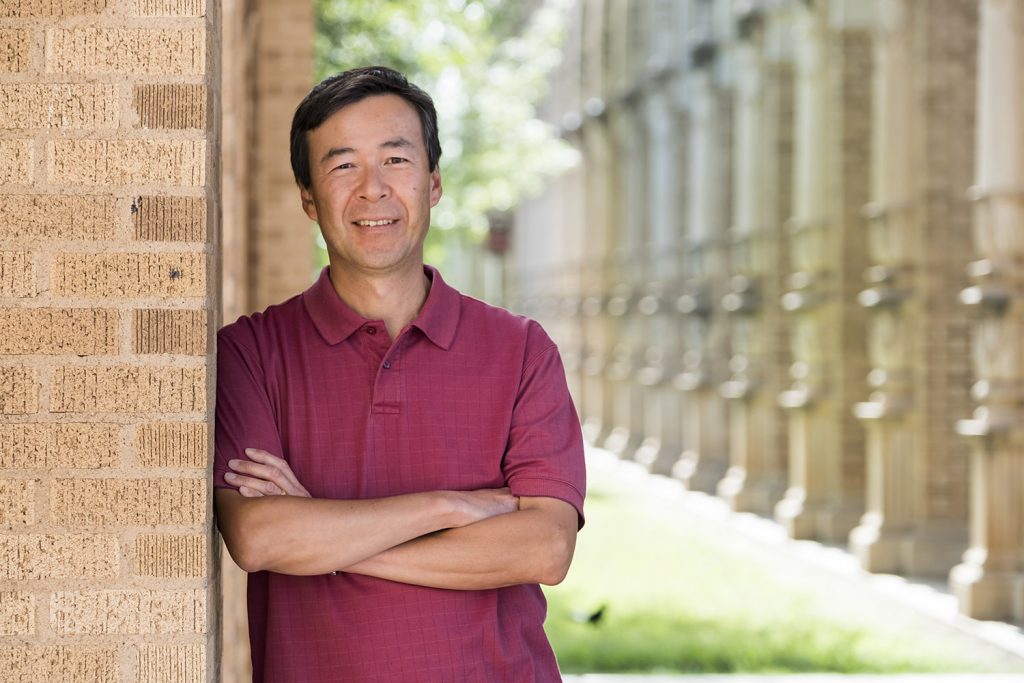
Nagihara, who is now Associate Professor of Geophysics at Texas Tech University, said that finding the tapes was one thing, but getting their hands on a machine that could read fifty-year old magnetic tapes was tricky and expensive.
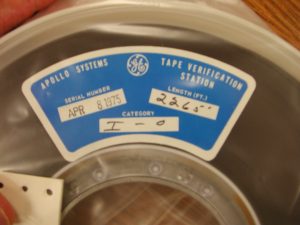
“You have to remember the ARCSAV tapes are seven-track open-reel magnetic tapes,” said Nagihara. “Very few organizations in the world still have machines that can read them and on top of that, the tapes were nearly fifty years old and their quality much degraded. That made them even harder to read.”
“By the time we got the funding,” added Nakamura, “the company we’d originally contracted to read the tapes was no longer in business. Fortunately, we found another company right here in Austin.”
With help from the Austin-based firm, eventually tapes were successfully decoded and analyzed, leading to remarkable discoveries by contemporary lunar scientists, including Nagihara.
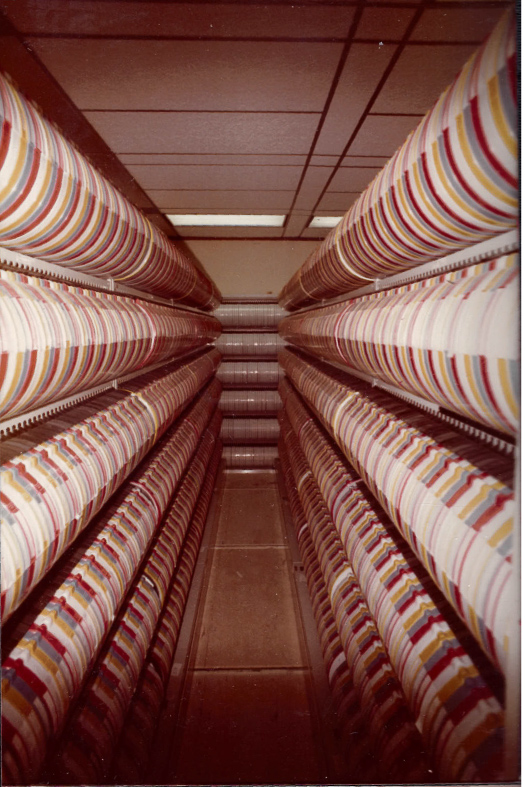
As for the 12,000 tapes held at Galveston, in the early 1990s these were brought to the Jackson School of Geosciences at the University of Texas at Austin for safe keeping. “All that first floor, where the cafeteria is, what they now call the student center, that was all tapes!” remembered Nakamura.
Fortunately for the Jackson School’s future student center, a new method of data storage became available in the early 1990s called Exabyte tapes – basically, fat versions of the cassette tapes you would use in a Walkman of the time.
Copying all 12,000 tape reels to Exabyte tapes required money and with NASA preoccupied with other projects, Nakamura looked elsewhere.
“I talked to a Japanese scientist at a science conference who said maybe ISAS, the Institute of Space and Astronautical Science (a division of the Japan Aerospace Exploration Agency, JAXA) can come up with something. And they did, so we got Japanese funding to copy all those to cassette tapes.”
It took a team of undergraduate students working overlapping shifts about a year and a half to copy 12,000 tapes onto just eighty cassette tapes.
Copies were sent to IRIS DMC where they are safely stored online and publicly available. The NASA Space Science Coordinated Archive (NSSDCA), has also recently received a copy and will make the data available publicly online.
“There is still lots of potential in here,” said Nakamura of the Apollo lunar data. “Many parts of the data haven’t really been looked at in detail yet.”
Nakamura continues to study the lunar data and encourages others to apply new analysis techniques including advanced computing methods to extract new insights from the decades old data. He is also assisting younger scientists and engineers in planning future lunar missions, such as NASA’s ongoing Artemis program, for which Nakamura’s former colleague, Nagihara, has been selected to develop a heat flow probe to study the moon’s thermal properties.
Despite several abandoned efforts by NASA and other agencies, Nakamura remains hopeful that future generations, working collaboratively will soon return to the moon and uncover more of its secrets.

“I think eventually an international team will go there and put seismometers on the moon again. In this kind of things, there is no boundary between countries.” – Yosio Nakamura
* When UTIG was founded in 1972, it was called the Earth and Planetary Sciences Division and oddly was part of the University of Texas Medical Branch (UTMB), Galveston. A few years later, the institute became the Galveston Geophysics Laboratory when it became a part of the Marine Science Institute (MSI) of the University of Texas at Austin, which later separated from MSI to become UTIG.
** Now known as the Lamont-Doherty Earth Observatory.
*** Six months later, Apollo 13 deliberately aimed the 16.5 ton third stage of the giant Saturn V rocket that propelled them into space directly at the moon, creating a seismic wave that rang for three hours and fifty minutes. Then on May 14, 1972 the seismometer network picked up a large meteoroid impact, known as the Whopper, which reverberated for more than five hours.

